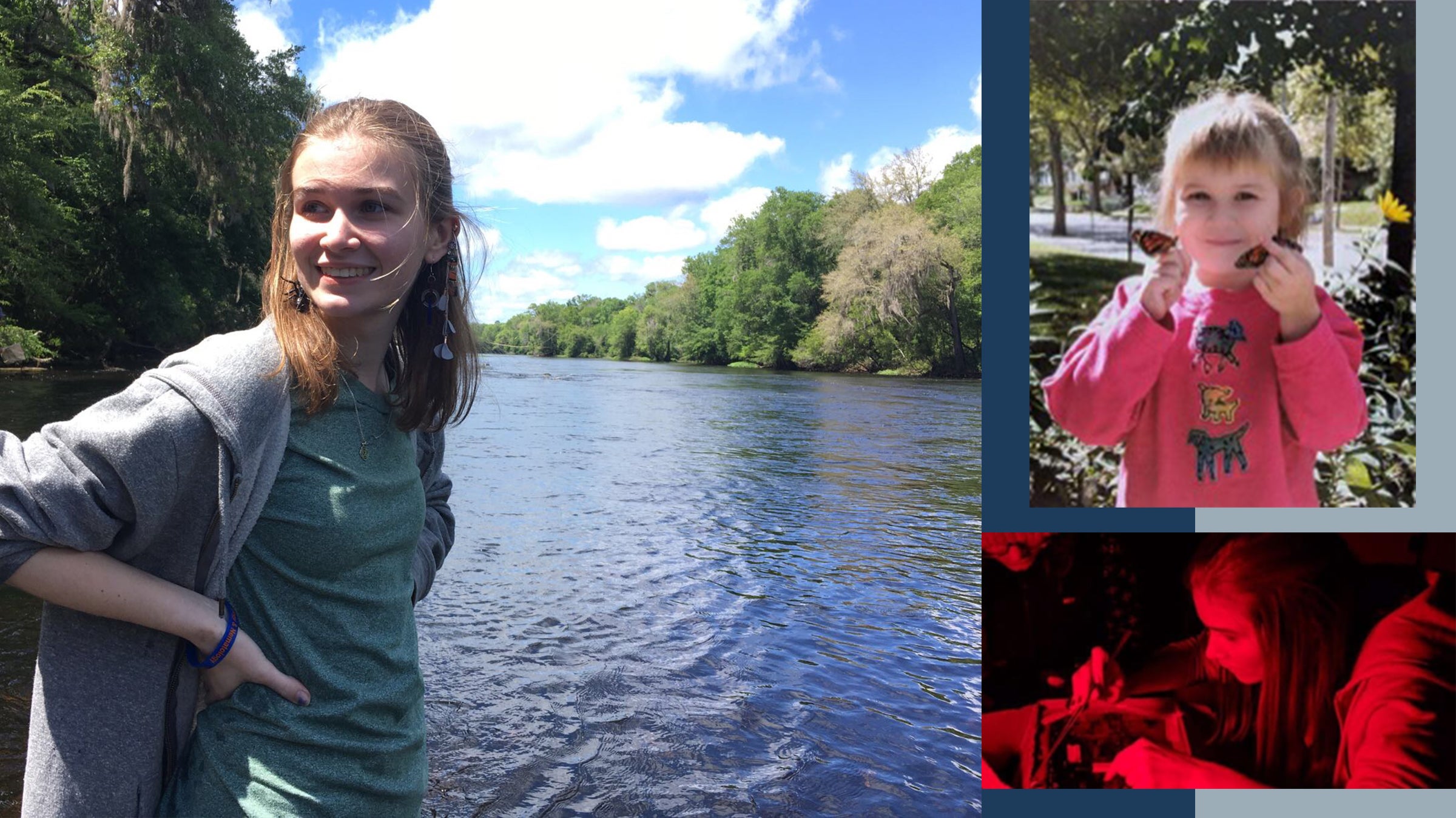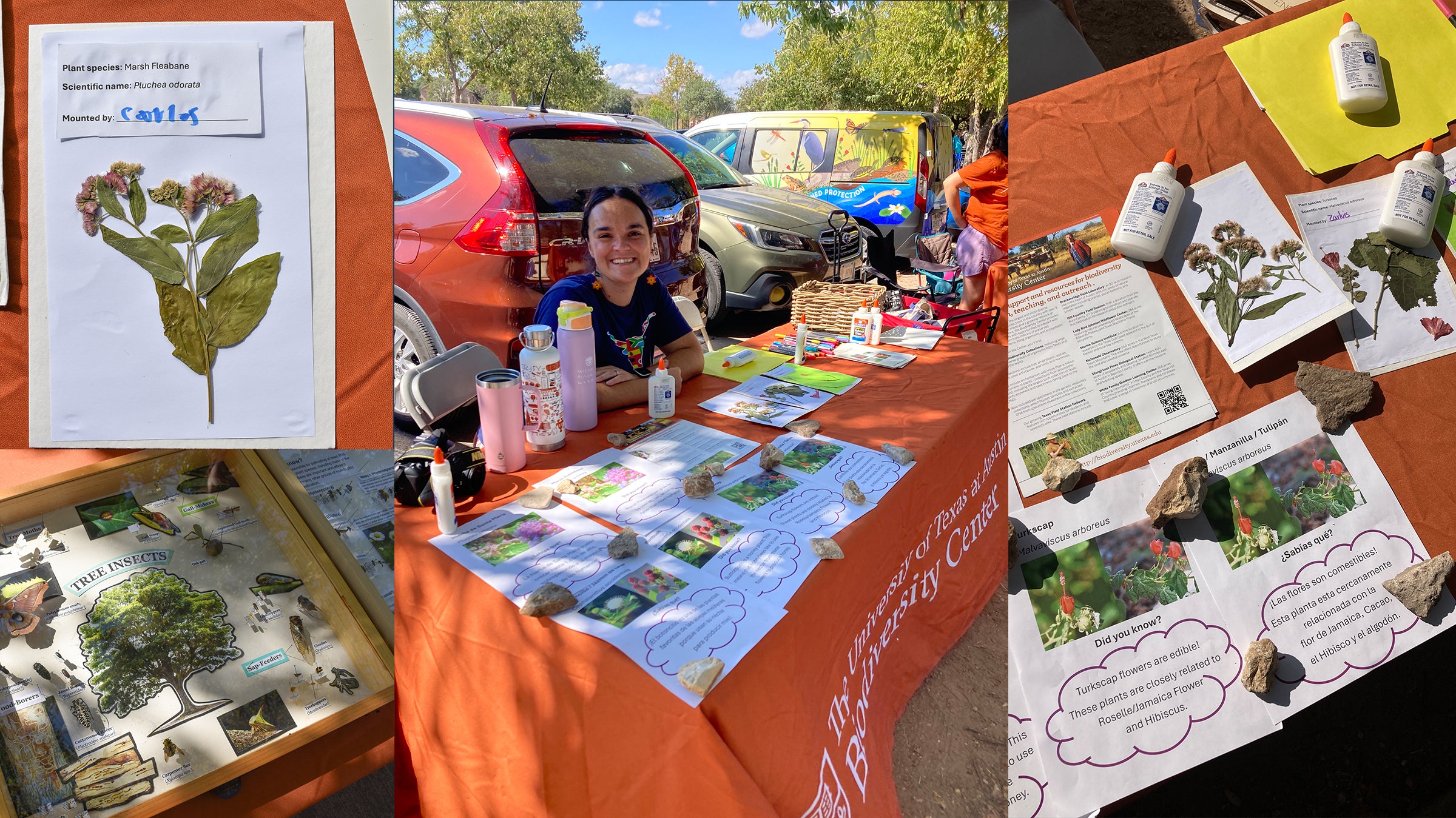Campus Biodiversity: Grackles Here, Grackles There, Grackles Everywhere!
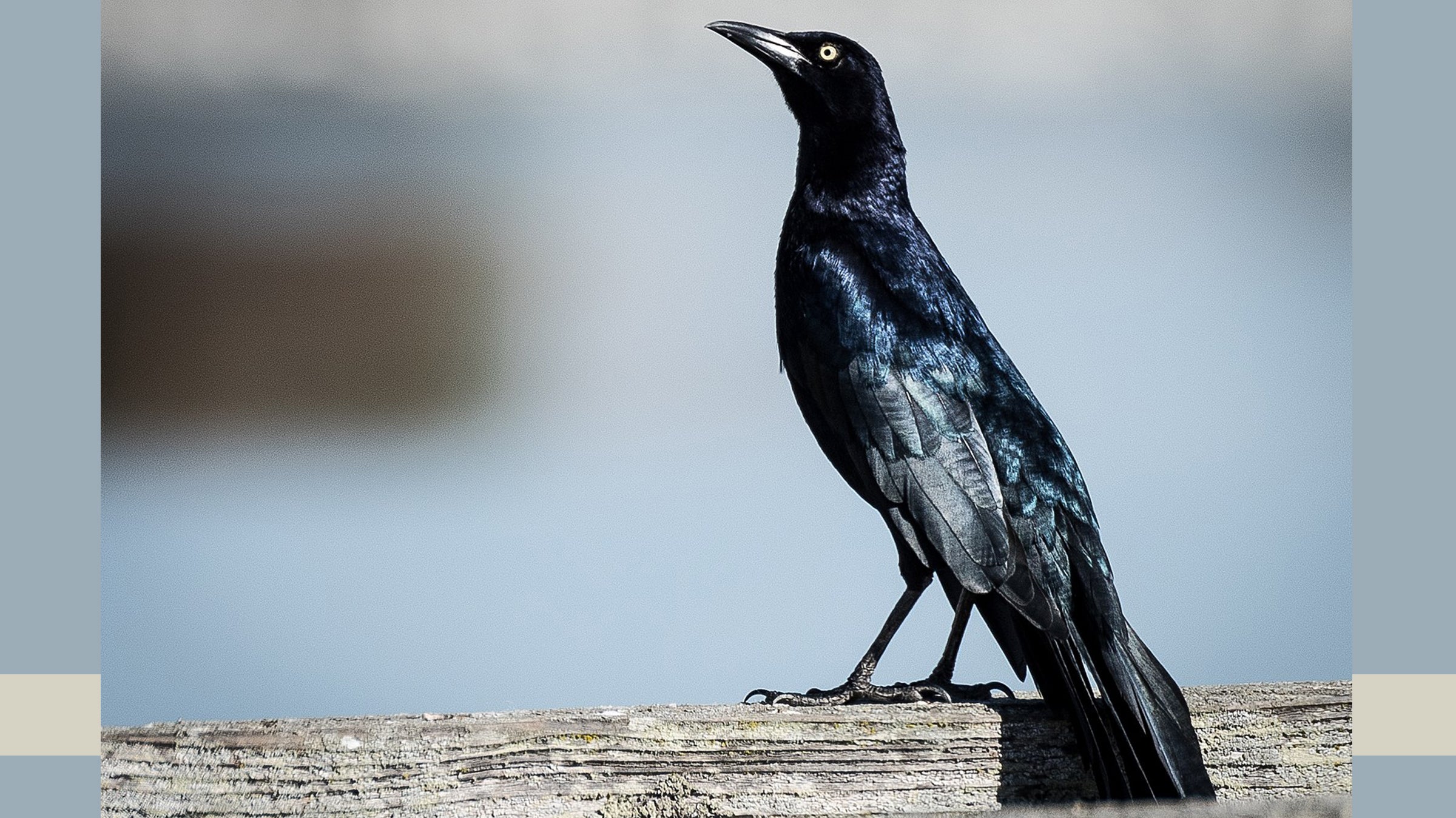
Great-tailed grackle, male. (Photo: Becky Matsubara)
If you pair the words “Austin” and “bird,” you get “grackle.” But these rambunctious omnipresent birds have an expanding breeding range, and have been around long before Texas was even a state. Austin, for better or for worse, cannot really claim them as our own.
Grackle is the common name of any of eleven passerine birds native to North and South America. A passerine is any bird from the order Passeriformes. This includes more than half of all bird species. Passerines are sometimes known as “perching birds,” distinguished from other birds by the arrangement of their toes. Three point forward, and one points back. Passeriformes is the largest order of birds, with more than 110 families and approximately 6400 identified species.
Austin has both the common grackle (Quiscalus quiscula) and well as the great-tailed grackle (Quiscalus mexicanus.)
The males have black plumage, but catch one in the sun and you’ll see the feathers are actually black iridescent. The females are less dramatic with their dark and light brown plumage. The male’s eye is piercing yellow. Juvenile grackles are noisy, following their mothers around to beg for a juicy insect or bite of human food, and they have scraggly heads as their adult feathers still have yet to appear.
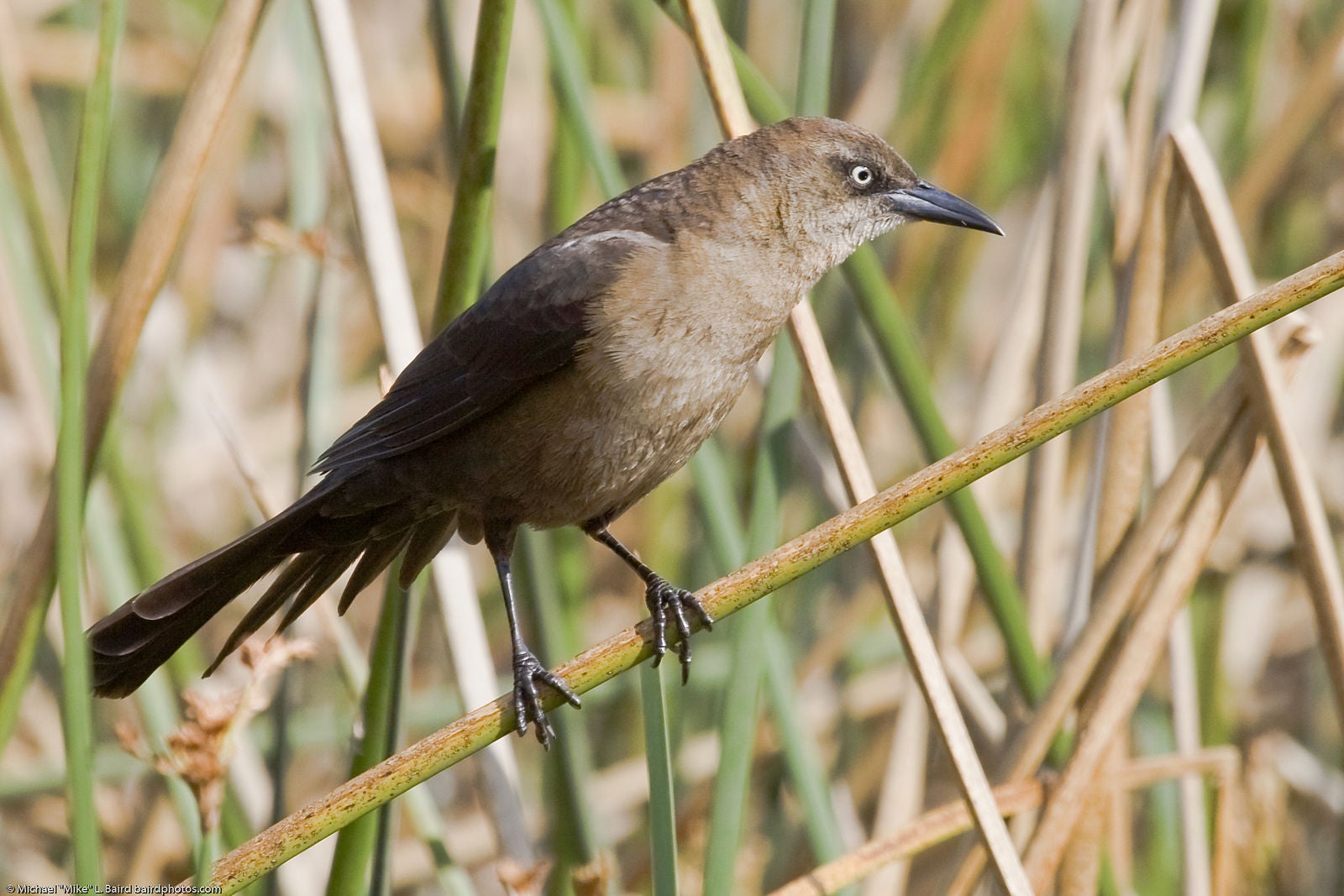
Great-tailed grackle, female. (Photo: Mike Baird)
These birds are highly social and very hardy as they thrive in both rural and developed areas. Grackles have a very diverse diet and forge in places as diverse as agricultural fields and feedlots, suburban neighborhoods, parks, and city trashcans and streets. They love insects, and you may often see them trailing someone busily mowing a lawn, as this exposes worms and insects to the hungry grackle. They have been seen picking off dead insects from car grilles and license plates. They also eat tadpoles, frogs, lizards, snakes, fish, small mammals, and any food scraps lying around. There are many urban tales about grackles patiently waiting for someone eating outside to turn away for just long enough for the bird to steal a french fry, one of its favorite treats.
There are so many striking qualities about grackles, and perhaps one that most Austinites are familiar with are the large flocks, some of which can number in the tens of thousands. This gathering resembles something from Alfred Hitchcock’s classic 1963 horror film, The Birds. The creatures congregate at dusk in any number of places, from our campus to parking lots at malls and grocery stores, to telephone pole wires and tree tops. Just make sure you don’t park your car under these roosting birds.
The reason they roost like this boils down to predators. In a parking lot, you can see a predator coming, and there are also thousands of other birds around to see it and alert everyone that something wicked this way comes.
The sounds grackles make are also unmistakable, particularly around mating season or when the birds are preparing to roost at dusk. Their vocalizations have been compared to things as disparate as car alarms, rusty gates, and radio static. Take a listen here, https://www.allaboutbirds.org/guide/Common_Grackle/sounds#
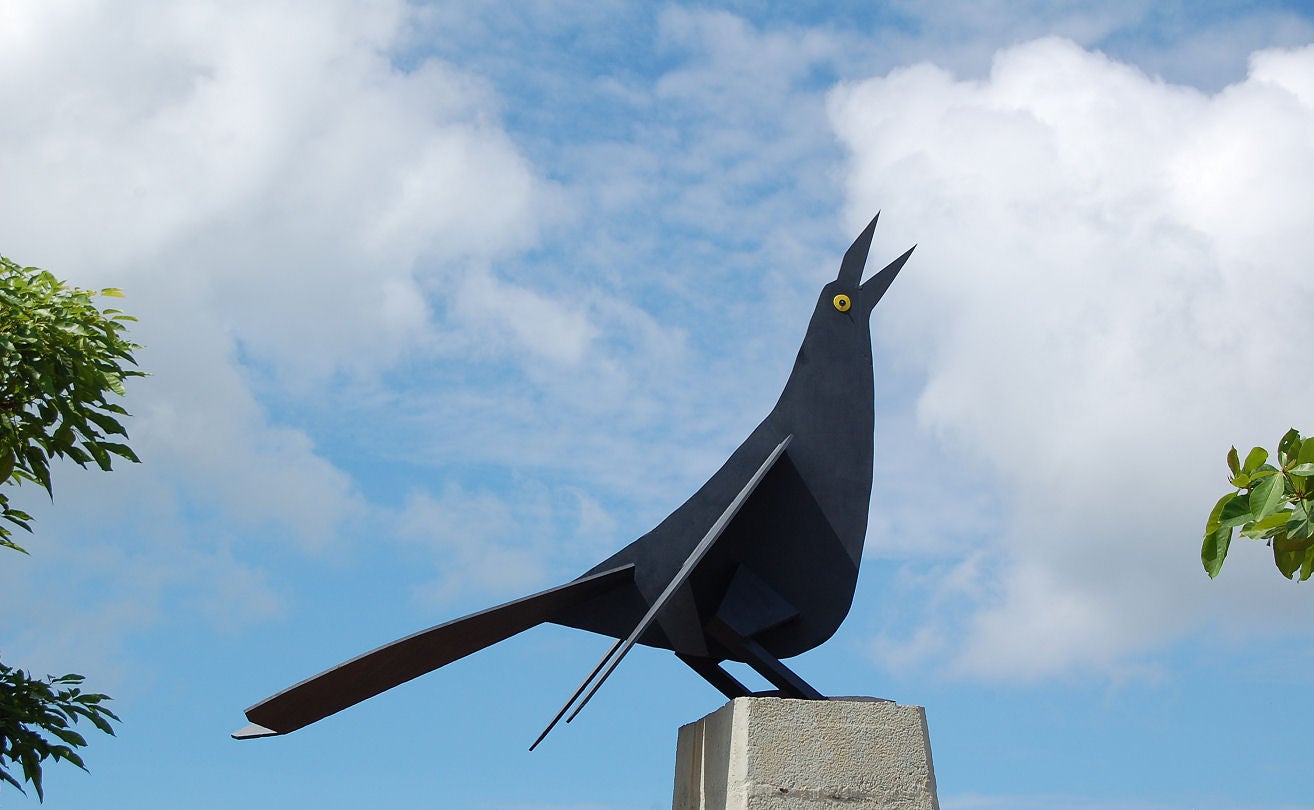
Enrique Grau statue. (Photo: Ealmagro)
Ornithologist, Walter Wehtje, did his dissertation on the geographic expansion of the three subspecies of great-tailed grackles, and spent years tracking grackle populations in the US and Mexico. His research shows that the origins of human and grackle populations living together began around 1400 in Mexico. After the Aztecs conquered the lowlands of Mexico, they became enamored with the grackles living there. The dark iridescent feathers were perfect for their clothing and decor. So, they brought the birds back to what is now Mexico City, and then began to release them.
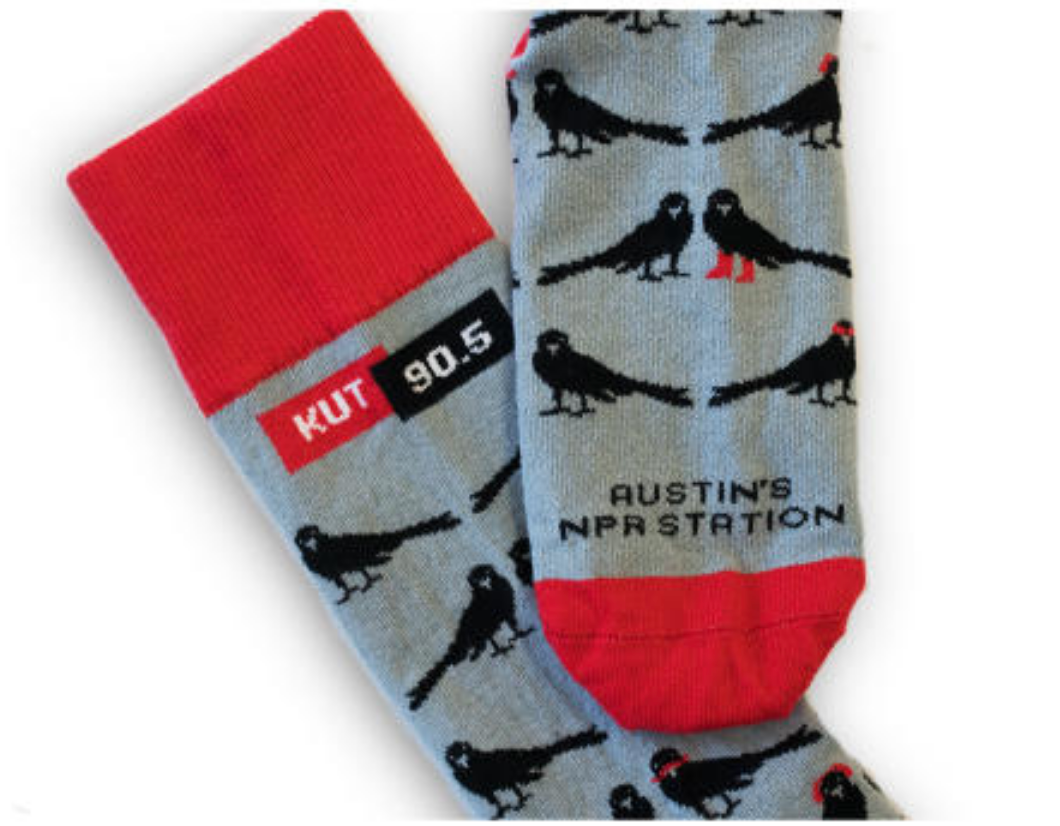
KUT 90.5 grackle socks.
The populations of these birds have been moving steadily northward ever since, following human development. Grackles expanded their breeding range by over 5500% by moving north into North America between 1880 and 2000, following urban and agricultural corridors.
Because the grackle is such a flamboyant bird, it’s made its mark culturally as well. In Mexico, where the bird is known as chanate or zanate, the legend is that the grackle was mute. In order to remedy this, it stole seven songs from the sea turtle. Mexican artisans depict the bird sometimes in whistles where the bird rides the back of the sea turtle.
In Columbia, it is the official bird of Cartagena de Indias, and many monuments exist that depict the grackle. Cartagena artist, Enrique Grau, liked grackles, and they figure into some of his work, including a statue of the bird in Bogotá.
Here in Austin, we’ll take our grackles in many ways, like on our socks, as local station KUT 90.5 offers socks with grackles on them as part of their fundraising drives. Additionally, there is a bar on the East Side named after the bird, and Austin-based author James Brush wrote Birds Nobody Loves, a collection of illustrated poems about Central Texas vultures and well, grackles.
The Campus Biodiversity series explores the urban wildlife and plant life of UT Austin.
SOURCES:
“All About Birds: Great-tailed Grackle” The Cornell Lab of Ornithology (accessed online: https://www.allaboutbirds.org/guide/Great-tailed_Grackle/id#)
Buchele, Mose “Why Do Grackles Flock to Grocery Store Parking Lots at Dusk?” March 31, 2016 KUT 90.5 (accessed online: http://www.kut.org/post/why-do-grackles-flock-grocery-store-parking-lots-dusk)
Gill F & D Donsker (Eds). (2015). IOC World Bird List (v 5.1). doi 10.14344/IOC.ML.5.1 www.worldbirdnames.org [Accessed 2017/12/11].
Lomax, John Nova. “Eight Reasons Grackles are Awesome.” The Daily Post, February 19, 2015.

